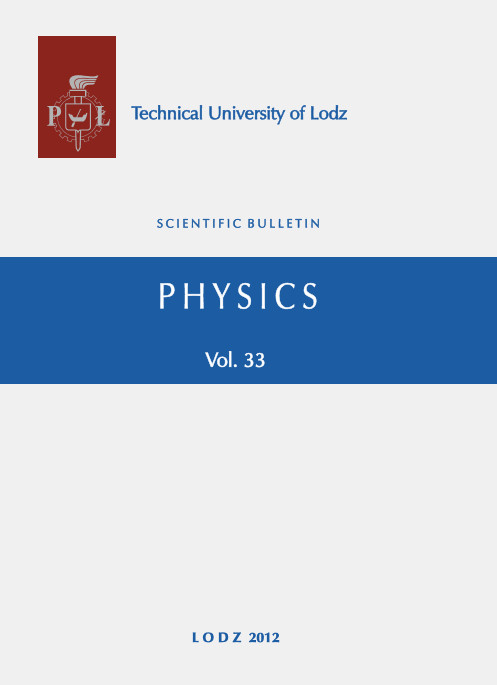Abstract
Space charge limited currents in inhomogeneous thin film insulating systems are studied by means of numerical methods. Calculations for two spatial distribution of traps are presented. The results confirm that the influence of charge traps at the emitter is much stronger than those at the collector. The case of illumination of the emitter is also analyzed. It turns out that it is possible to find the valued of parameter describing the exponential decay of trap distribution at the emitter and the surface trap concentration for the case of illuminated sample. The paper summarizes the data concerning possibility of determination of trap distribution at the emitter in thin film insulators using photo-enhanced space-charge-limited current measurements.
References
Sze S.M., Physics of Semiconductor Devices, Wiley, New York 1981.
Yepifanov G., Physical Principles of Microelectronics, Mir Publishers, Moscow 1974.
Moore D.T., Appl. Opt., 19 (1980) 1035.
Akiba A., Iga K., Appl. Opt., 29 (1990) 4092.
Kryszewski M., Polymers for Advanced Technologies, 9 (1998) 244.
Silinsh E.A., Organic Molecular Crystals, Springer-Verlag, Berlin 1980.
Silinsh E.A., Capek V., Organic Molecular Crystals, American Institute of Physics, New York 1994.
Sworakowski J., Mol. Cryst. Liq. Cryst. 11 (1970) 1.
Sworakowski J., Mol. Cryst. Liq. Cryst. 19 (1973) 259.
Sworakowski J., Mol. Cryst. Liq. Cryst. 253 (1994) 233.
Akovali G., Biliyard K., Shen M., J.Appl.Polym.Sci., 20(1967) 2419.
Mott N.F., Gurney R.W., Electronic Processes in Ionic Crystals, Oxford Univ. Press, New York 1940.
Rose A., Phys. Rev. 97 (1955) 1538.
Lampert M., Phys.Rev. 103 (1966) 1648.
Lampert M.A., Mark P., Current Injection in Solids, Academic Press, New York 1970.
Helfrich W., Mark P., Z.Phys. 166 (1962) 370.
Many A., Rakavy G., Phys.Rev. 126 (1962) 1980.
Nicolet M.-A., J.Appl.Phys. 37 (1966) 4224.
Sworakowski J., J.Appl.Phys. 41 (1970) 292.
Bąk G.W., Thin Solid Films 238 (1994) 290.
Bąk G.W., J.Phys.:Condensed Matter 8 (1996) 4145.
Sworakowski J., Nespurek S., J.Appl.Phys. 65 (1989) 1559.
Godlewski J, Kalinowski J., Phys.Stat.Sol.(a) 53(1979) 161.
Kao K.C., Hwang W., Electrical Transport In Solids, Pergamon, Oxford 1981.
Szymański A., Acta Physica Polonica 34 (1968) 201.
Kania S., Lipiński A., Mycielski W., Thin Solid Films 72 (1980) L11.
Bąk G.W., Materials Science and Engineering 80 (1986) L37.
Bąk G.W., J.Phys.C: Solid State Phys., 20 (1987) 1129.
Du Y., Xue Y., Frish H.L., in „Physical Properties of Polymers – Handbook” ed. Mark J.M., Am. Inst. Of Physics, New York 1997.

